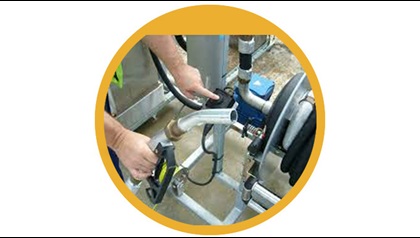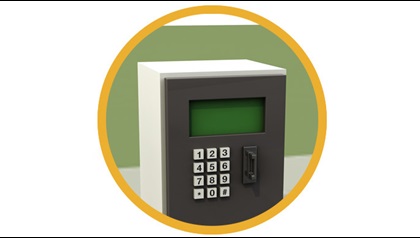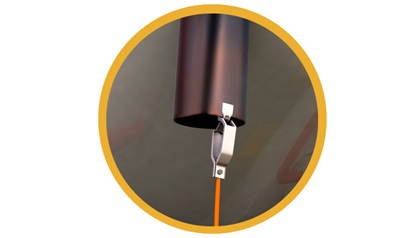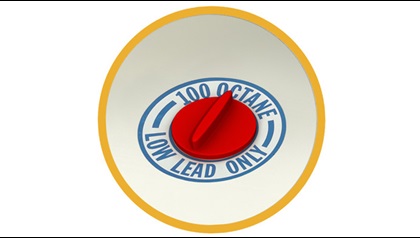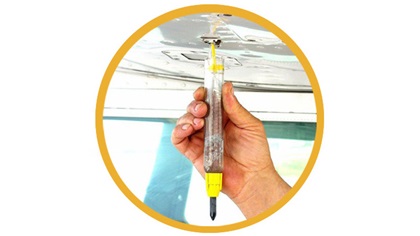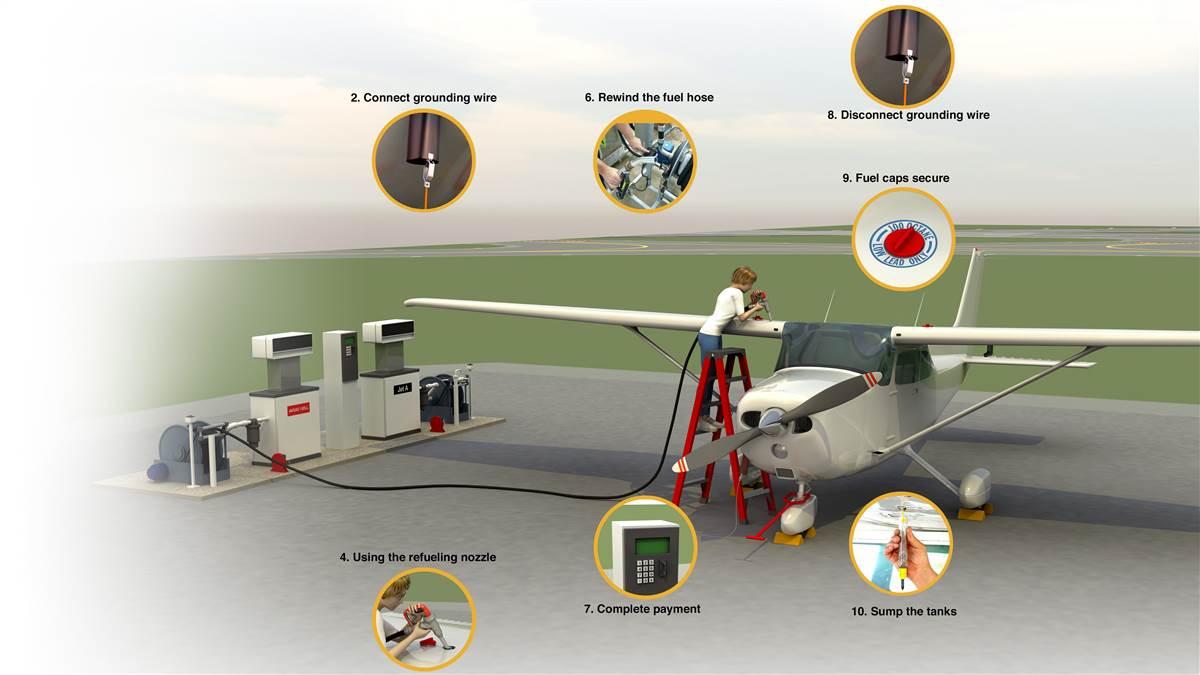
Have you learned the proper technique for fueling your airplane? Some student pilots develop this important skill during their first flight lessons, while others may fly from facilities where refueling is handled by others—and have to figure it out on their own at an unfamiliar airport.
Most important is filling the aircraft with the correct fuel. Almost all piston-engine aircraft use 100-octane, low-lead (100LL) aviation gasoline. Turbine-powered aircraft use a kerosene-like fuel; Jet-A is most common. Fuel trucks and self-serve fuel facilities should be marked clearly with bright red 100LL or Jet-A placards.
Fueling a piston aircraft with jet fuel usually results in a complete loss of engine power. While fuel nozzles and aircraft fuel-tank fillers are designed to prevent misfueling, the possibility is always there because of nozzle modifications or the use of nonstandard nozzles. And the fact that some piston aircraft engines can be replaced with turbine engines can cause confusion among line personnel.
Before refueling, look at the fuel gauges and estimate how many gallons of fuel will be required. This will help to assure that you leave with the desired amount of fuel on board. And it’s always a good idea to compare the amount of fuel you used on a flight with the fuel requirement you calculated, to validate the aircraft’s actual fuel consumption.
- Approach the fueling area
Identify the fueling area and carefully maneuver your airplane to the pump. You might want to use the tow bar to pull your aircraft to or push it from the pump. Watch your wing tips!
- Connect grounding wire
Ground, or bond, your aircraft by unreeling and connecting the grounding line. This is to deter sparks from static electricity during the fueling process. Attach it to bare metal on the aircraft-the exhaust stack(s) is a good choice. If you've just flown, remember the exhaust will be hot.
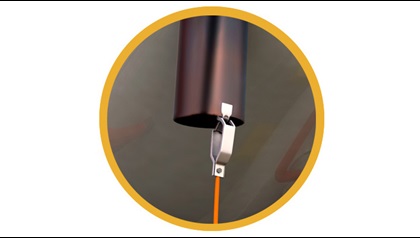
- At the fuel pump
Follow directions on the fuel pump. You may need to turn on a power switch before entering any required information and swiping (or inserting) your credit card.
- Using the refueling nozzle
Unreel the hose, pull it to the aircraft, and remove the fuel cap. A ladder should be available for fueling high-wing aircraft. Insert the nozzle and squeeze the trigger to begin fueling. This nozzle will not lock in the On position like the pumps at a gas station; watch carefully and ease off the handle as the tank fills, so it doesn't overflow. Caution: Hold the refueling nozzle upright throughout the process; if you lean it against he side of the opening it can bend metal and damage the aircraft.
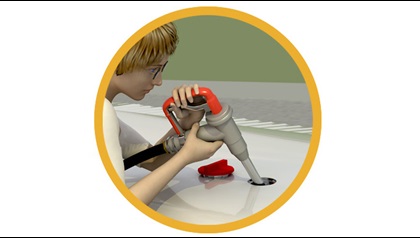
- Fill tanks and replace caps
Replace and carefully secure the cap. Move to the other wing and repeat the process. If you lay down the hose, make sure the nozzle's opening does not touch the ground. Fill any other tanks; some twin-engine aircraft have as many as six.
- Rewind fuel hose
When you're finished, rewind the hose. Most reels have springs or other mechanisms to retract the hose; some can exert a strong pull.
- Complete payment
Complete your transaction and turn off the main power switch, if there is one.
- Disconnect grounding wire
Disconnect and carefully rewind the grounding wire. Reposition the aircraft if necessary before starting.
- Fuel caps secure
Doublecheck the fuel caps to ensure they're properly positioned and securely closed.
- Sump the tanks
Wait for the new fuel (and any water it might contain) to settle before sumping the tanks. If you're leaving right away, gently rock a wing tip up and down several times to help any water get to the lowest part of the tank.
